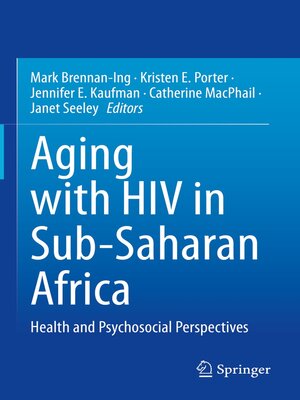Aging with HIV in Sub-Saharan Africa
ebook ∣ Health and Psychosocial Perspectives
By Mark Brennan-Ing

Sign up to save your library
With an OverDrive account, you can save your favorite libraries for at-a-glance information about availability. Find out more about OverDrive accounts.
Find this title in Libby, the library reading app by OverDrive.



Search for a digital library with this title
Title found at these libraries:
| Loading... |
With the development of effective antiretroviral therapies (ART) in the mid-1990s, HIV became a treatable although serious condition, and people who are adherent to HIV medications can attain normal or near-normal life expectancies. Because of the success of ART, people 50 and older now make up a majority of people with HIV in high-income countries and other places where ART is accessible. The aging of the HIV epidemic is a global trend that is also being observed in low- and middle-income countries, including countries in sub-Saharan Africa, where the greatest number of older people with HIV reside (3.7 million). While globally over half of older adults with HIV are in sub-Saharan Africa, we have little information about the circumstances, needs, and resiliencies of this population, which limits our ability to craft effective policy and programmatic responses to aging with HIV in this region. At present, our understanding of HIV and aging is dominated by information from theU.S. and Western Europe, where the epidemiology of HIV and the infrastructure to provide social care are markedly different than in sub-Saharan Africa. Aging with HIV in Sub-Saharan Africa addresses this gap in our knowledge by providing current research and perspectives on a range of health and psychosocial topics concerning these older adults from across this region. This volume provides a unique and timely overview of growing older with HIV in a sub-Saharan African context, covering such topics as epidemiology, health and functioning, and social support, as well as policy and program implications to support those growing older with HIV.
There are very few published volumes that address HIV and aging, and this is the first book to consider HIV and aging in sub-Saharan Africa. Most publications in this area focus on HIV and aging in Uganda and South Africa. This volume broadens the scope with contributions from authors working in West Africa, Botswana, and Kenya. The range of topics covered here will be useful to professionals in a range of disciplines including psychology, epidemiology, gerontology, sociology, health care, public health, and social work.






